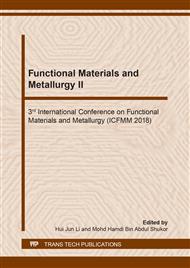p.92
p.98
p.104
p.113
p.119
p.124
p.129
p.137
p.143
The Influence of Technological Parameters on Drawing Force at Cold Drawing of Steel Tubes Using FEM Simulation
Abstract:
The process of cold die drawing of tubes is ranked among frequently used methods of production of seamless tubes and is performed in drawing tool which is characterized by simple design. Shape and dimensions of the drawing tool depend on tube reduction degree, i. e. on original diameter of initial tube and final internal diameter of the tube. Tube wall thickness is not determined by any tool. The technology of cold die drawing of tubes is influenced by various process parameters, i.e. geometry of the die itself, strain degree and strain rate, force conditions, conditions of friction, method of lubrication and the type of used lubricant. The contribution is concerned with evaluation of influence of the selected process parameters using FEM simulation. Designed graphs illustrate the impact of coefficient of friction and reduction cone of drawing tool on the size of drawing force.
Info:
Periodical:
Pages:
124-128
Citation:
Online since:
July 2019
Authors:
Keywords:
Price:
Сopyright:
© 2019 Trans Tech Publications Ltd. All Rights Reserved
Share:
Citation:


